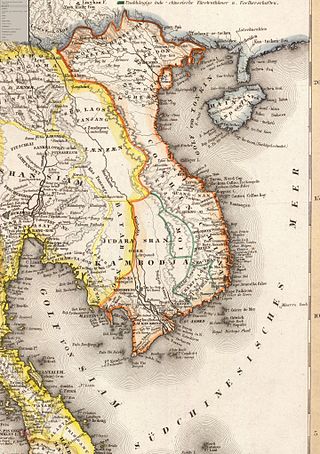
Amago Katsuhisa was a remnant of the Amago clan, a powerful feudal clan in the Chūgoku region of Japan, backed up by Yamanaka Yukimori, a vassal of the clan.

Black Friday is the name given to an incident occurring on 8 September 1978 in Iran, in which 64, or at least 100 people were shot dead and 205 injured by the Pahlavi military in Jaleh Square in Tehran. According to the military historian Spencer C. Tucker, 94 were killed on Black Friday, consisting of 64 protesters and 30 government security forces. The deaths were described as the pivotal event in the Iranian Revolution that ended any "hope for compromise" between the protest movement and the regime of Shah Mohammad Reza Pahlavi.

Yemelyan Ivanovich Pugachev was an ataman of the Yaik Cossacks and the leader of the Pugachev's Rebellion, a major popular uprising in the Russian Empire during the reign of Catherine the Great.

The Russo-Turkish War of 1787–1792 involved an unsuccessful attempt by the Ottoman Empire to regain lands lost to the Russian Empire in the course of the previous Russo-Turkish War (1768–1774). It took place concomitantly with the Austro-Turkish War (1788–1791), Russo-Swedish War (1788–1790) and Theatre War.

The Battle of Muret, fought on 12 September 1213 near Muret, 25 km south of Toulouse, was the last major battle of the Albigensian Crusade and one of the most notable pitched battles of the Middle Ages. Although estimates of the sizes of the respective armies vary considerably even among distinguished modern historians, it is most well known for a small force of French knights and crusaders commanded by Simon de Montfort the Elder defeating a much larger allied army led by King Peter II of Aragon and Count Raymond VI of Toulouse.

Pugachev's Rebellion of 1773–1775 was the principal revolt in a series of popular rebellions that took place in the Russian Empire after Catherine II seized power in 1762. It began as an organized insurrection of Yaik Cossacks headed by Yemelyan Pugachev, a disaffected ex-lieutenant of the Imperial Russian Army, against a background of profound peasant unrest and war with the Ottoman Empire. After initial success, Pugachev assumed leadership of an alternative government in the name of the late Tsar Peter III and proclaimed an end to serfdom. This organized leadership presented a challenge to the imperial administration of Catherine II.

The Battle of Erzincan was a Russian victory over the Ottoman Empire during the First World War.
The Second Guangxi campaign was a three-front Chinese counter offensive to retake the last major Japanese stronghold in Guangxi province, South China during April–August 1945. The campaign was successful, and plans were being made to mop up the remaining scattered Japanese troops in the vicinity of Shanghai and the east coast when the Soviets invaded Manchuria, the Americans dropped atomic bombs on Hiroshima and Nagasaki, leading to Japan's surrender and ending the eight-year-long Second Sino-Japanese War.
The First rout of the Jiangnan Battalion took place between 1853 and 1856 when the Qing government raised the Green Standard Army to fight against the Taiping Heavenly Kingdom. The action involved Qing forces surrounding the city of Nanjing, the capital of the Taiping Heavenly Kingdom.
The Battle of Guanzhong occurred during the Taiping Revolution that took place in October 1861. When Taiping's Western Army was defeated at Wuhan, they lost their connection with their capital of Nanjing. Former Western Army Commander Chen Yucheng then decided to resupply at Guanzhong. Some of their soldiers were troops who once fought for the Nian Rebellion, so Yucheng decided not to provide them with supplies, as he was uncertain of their loyalty.
Numerous rebellions against China's Qing dynasty took place between the mid-19th and early 20th centuries, prior to the abdication of the last Emperor of China, Puyi, in February 1912. The table below lists some of these uprisings and important related events.
Spencer C. Tucker is an American historian who was a Fulbright scholar, retired university professor, and author of works on military history. He taught history at Texas Christian University for 30 years and held the John Biggs Chair of Military History at the Virginia Military Institute for six years.
Operation Tiger Claw was a military conflict between Nigerian and Biafran military forces. The battle took place in the major port of Calabar. The Nigerian were led by Benjamin Adekunle while the Biafrans were led by Maj. Ogbo Oji. The aftermath was a major loss to the Biafrans because it cost the Biafrans one of their largest ports.
Druze in Jordan refers to adherents of the Druze faith, an ethnoreligious esoteric group originating from the Near East who self identify as unitarians (Muwahhideen). Druze faith is a monotheistic and Abrahamic religion, and Druze do not identify as Muslims.

The Siamese–Vietnamese wars were a series of armed conflicts between the Siamese Ayutthaya Kingdom and Rattanakosin Kingdom and the various dynasties of Vietnam mainly during the 18th and 19th centuries. Several of the wars took place in modern-day Cambodia.

The Treaty of Compiègne, signed on 30 April 1635 Old Style, was a mutual defence alliance between France and Sweden.

Yamana Toyokuni was a Japanese samurai and commander of the Sengoku period. He was the head of the Inaba Yamana clan and Shugo of the Inaba.
Saburra was a Numidian general who served the king of Numidia, Juba I, and fought Julius Caesar during Caesar's Civil War. He managed to defeat one of Caesar's lieutenant, Gaius Scribonius Curio at the Battle of the Bagradas before eventually being killed in battle by a mercenary commander Publius Sittius, who was loyal to Caesar.









